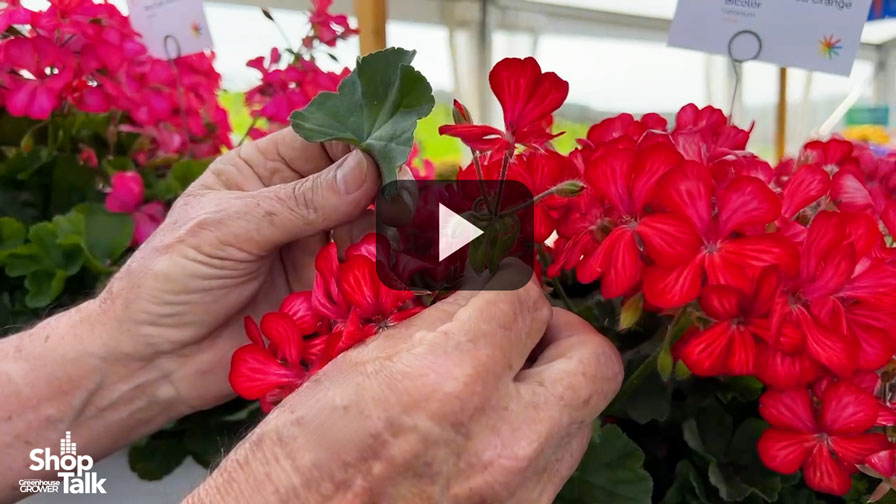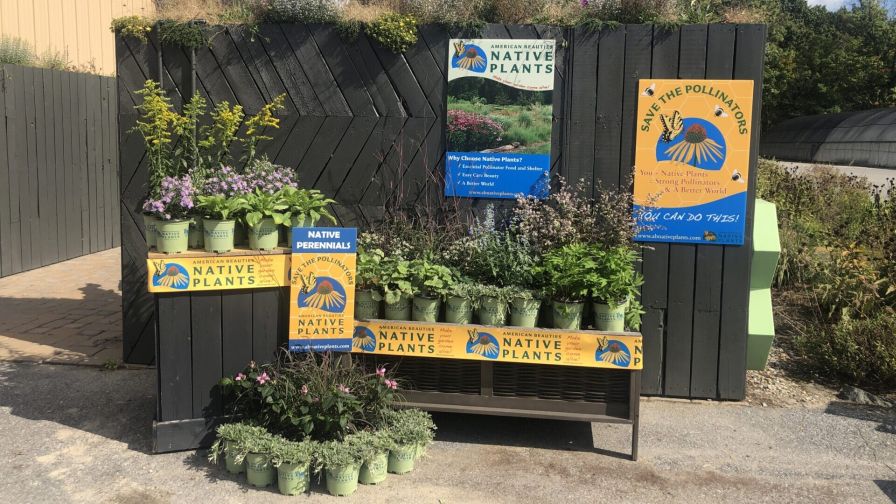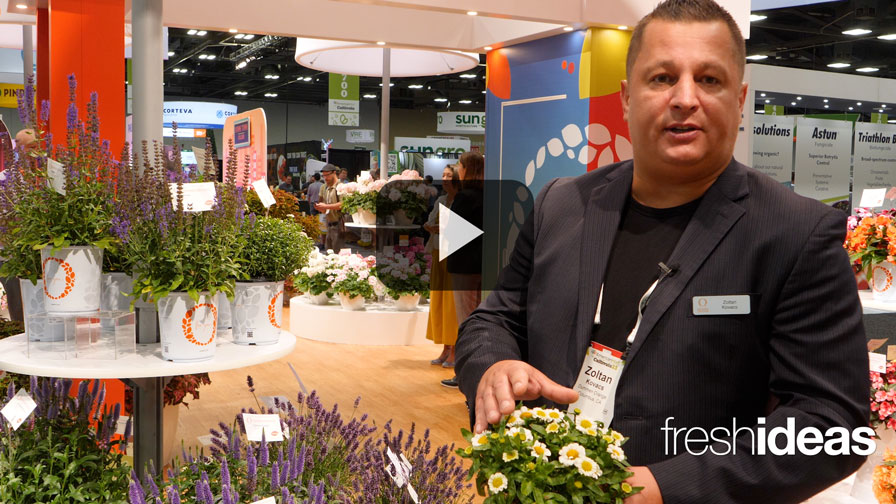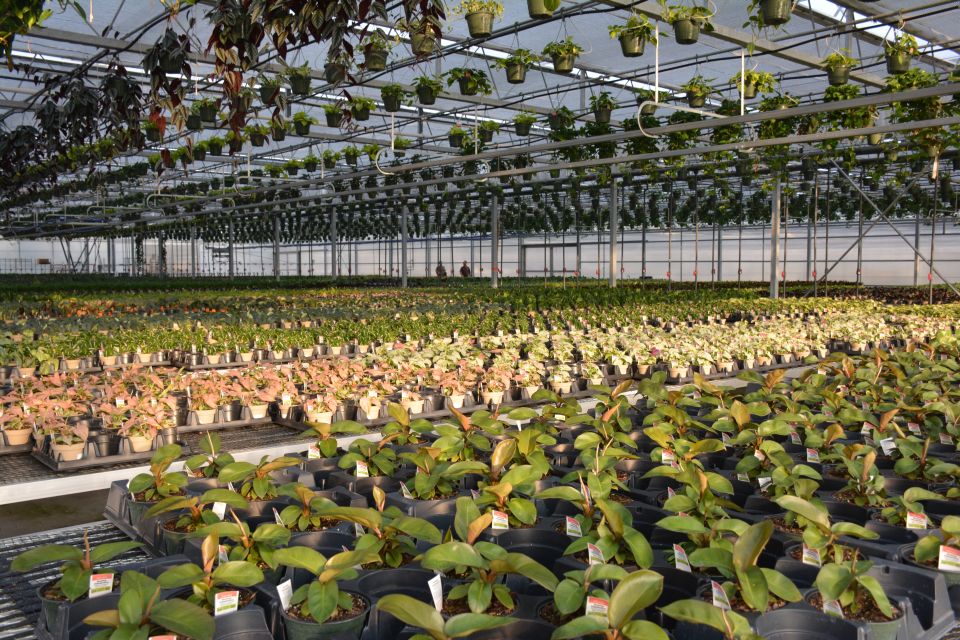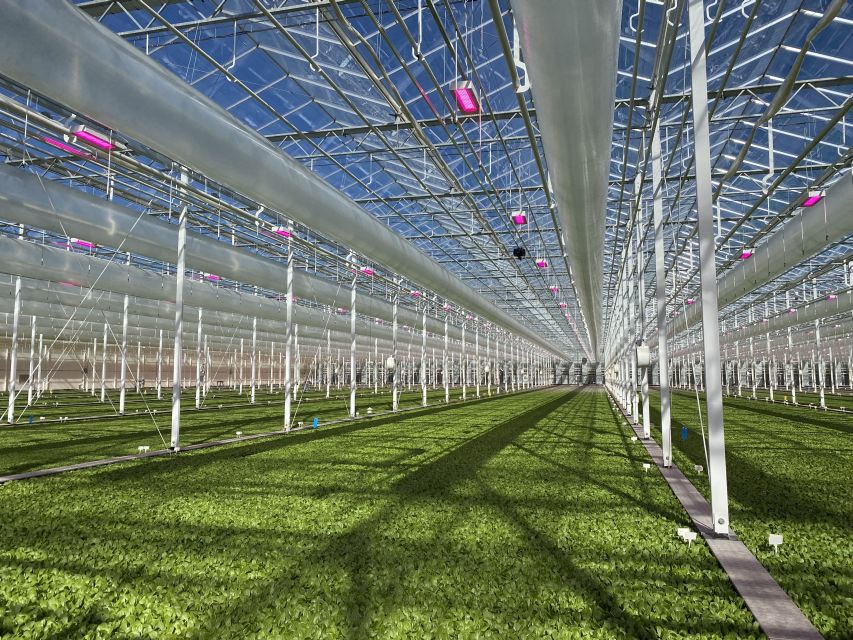What Are the Biggest Trends in Perennials Varieties in 2024? Find Out Here

Carex ‘Feather Falls’ (left) and ‘Ribbon Falls’ (Pacific Plug & Liner) grown at Twixwood Nursery in Berrien Springs, MI. Photo: Homer Trecartin, Twixwood Nursery
Punxsutawney Phil predicted an early spring. Jules Verne saw the modern submarine coming years in advance. Lacking our own groundhog, we reached out to see what production trends people in the perennial plant industry are seeing.
Several people shared the opinion that often, a consumer isn’t shopping for a particular plant, but more to fill a specific niche.
“They want something that’s deer-resistant, and they need something for shade or sun. They’re looking to fill those kinds of needs but don’t necessarily care specifically which plant,” says Homer Trecartin, Jr., Manager, Sales & Production Planning for Twixwood Nursery. “I’ve had breeders come to the nursery and tour with us and ask me what people are looking for. So, I tell them. They want deer-resistant hostas.”
Don’t we all? If you can make one of those, I will buy it.
No Vernalization Required?
Maybe it was because I asked, but everyone seemed to be talking about developing perennials that don’t need vernalization. Perennials that flower the first year are a much easier sell for retailers, whether independent garden centers or big box stores.
“What you’re doing is making the whole perennial program much more like an annual program,” explains Trecartin. “I think that’s a definite trend, and I think it’s a good one.”
“I call them annuals with benefits,” quips Chris Fifo, Perennial Products Representative at Darwin Perennials. “They can reach full potential, full flower power, in the first year — not just, hey, I could get a flower.”
Growers benefit from the increased appeal of perennials without the waiting time for color.
“The goal is to get more of these perennials with annual growers, and I’ve got plenty of calls saying, hey, my customers or my retailers asked me to grow perennials for them. So it’s a great starting point for those who are unsure what (perennials) to grow or how to grow them,” says Fifo.
“Everyone wants the amazing miracle perennial that will live in zone one and flowers the first year. I actually do see a trend towards the annualization of perennials. The same perennials, but they’ll flower in year one instead of making the homeowner wait until year two or year three. It’s almost imperative,” says Chuck Pavlich, Director of New Product Development for Terra Nova Nurseries.
Natives and Pollinators are Still a Thing
“The demand for natives still exceeds the supply,” Trecartin says of consumer interest in native plants.
People want to know about a perennial’s pollinator status, explains Pavlich. “They want to know: is it a good pollinator? Some of our plants have won awards nationwide for being the best pollinator in a trial. And so we always put that out there, too.”
“That’s a trend with the consumers that I don’t see going away anytime soon,” Fifo says of pollinator plants. “The more we can market perennials as pollinators, I think the more interest there’s going to be.”
Darwin Perennials is one of many working on nativars — hybridizing natives to get the attributes consumers want.
“Native species just don’t have that landscape-type performance that your general homeowner is looking for,” says Fifo. Nativars can add the extra flower power or faster growth that consumers want while still keeping the benefit of native plantings. Nativars are gaining more acceptance among consumers, as well.
“I think there’s been a realization that for the average homeowner, they’re not planting a prairie, and so a specific genotype that has been growing there for the last 300 years isn’t necessary,” says Trecartin. A nativar can provide the same benefit in the landscape.
Specific Trends
If you’re looking for something more concrete than natives or sustainable, here are a few more specific ideas and trends our experts identified.
- Lavender: “Lavender sales have been skyrocketing,” says Fifo. “It’s just this huge trend. We don’t see it slowing, either. I think lavender is probably one of the fastest growing categories of perennials.”
- Insect Friendly: Echoing the idea of the educated consumer, growers and breeders are getting direct questions about their insecticide use. Especially neonicotinoids. “The consumers are asking, are you using these? We were out of Imidacloprid usage well before it became an issue. We have a really extensive IPM program here, and we’re actually really proud of it,” says Pavlich.
- Hellebores: “Hellebores in the landscape are amazing,” Fifo tells us. “They’ve been a tremendously growing class of perennials in the last five years. They’re slow growing for the growers, but I have seen a lot of interest in growing hellebores the last few years.”
- Digging up the turf: Trading in some grass for more water and wildlife-friendly groundcovers is a growing movement. In some regions, homeowners are enjoying incentive programs aimed at reducing traditional grass lawns. “Carex is a big choice for ground covers,” says Trecartin. “Either a lawn replacement or as a replacement for more traditional ground covers. It has the native aspects to it. It’s probably our No. 1 selling grass now.” Pavlich agrees, “I do know that the trend for reducing the green patch of lawn is still very strong.”
- Drought and Wild Weather Resistant: Abnormal weather patterns are on consumers’ minds, and purchasing patterns reflect it. For 2024, expect plants that can handle extreme environments to be popular. “Water wise and heat tolerant has been a huge trend,” says Fifo. “Plants that can tolerate the extremes of temperatures and moistures — not just hot and dry, but also handle flooding rains.”
- Cut Flowers: Look at social media, and you’ll find flower farms. They’re springing up all over the place. Consumers are hungry for local, fresh flowers, which is translating to increased demand for perennials suitable for cut flower use. “People that have their own small farm stand are buying perennials like crazy. We’re being contacted by some of the biggest names in the industry for things that we normally sell as perennials, but are being used in the cut flower world. Which is huge. Well beyond what I thought,” says Pavlich.



